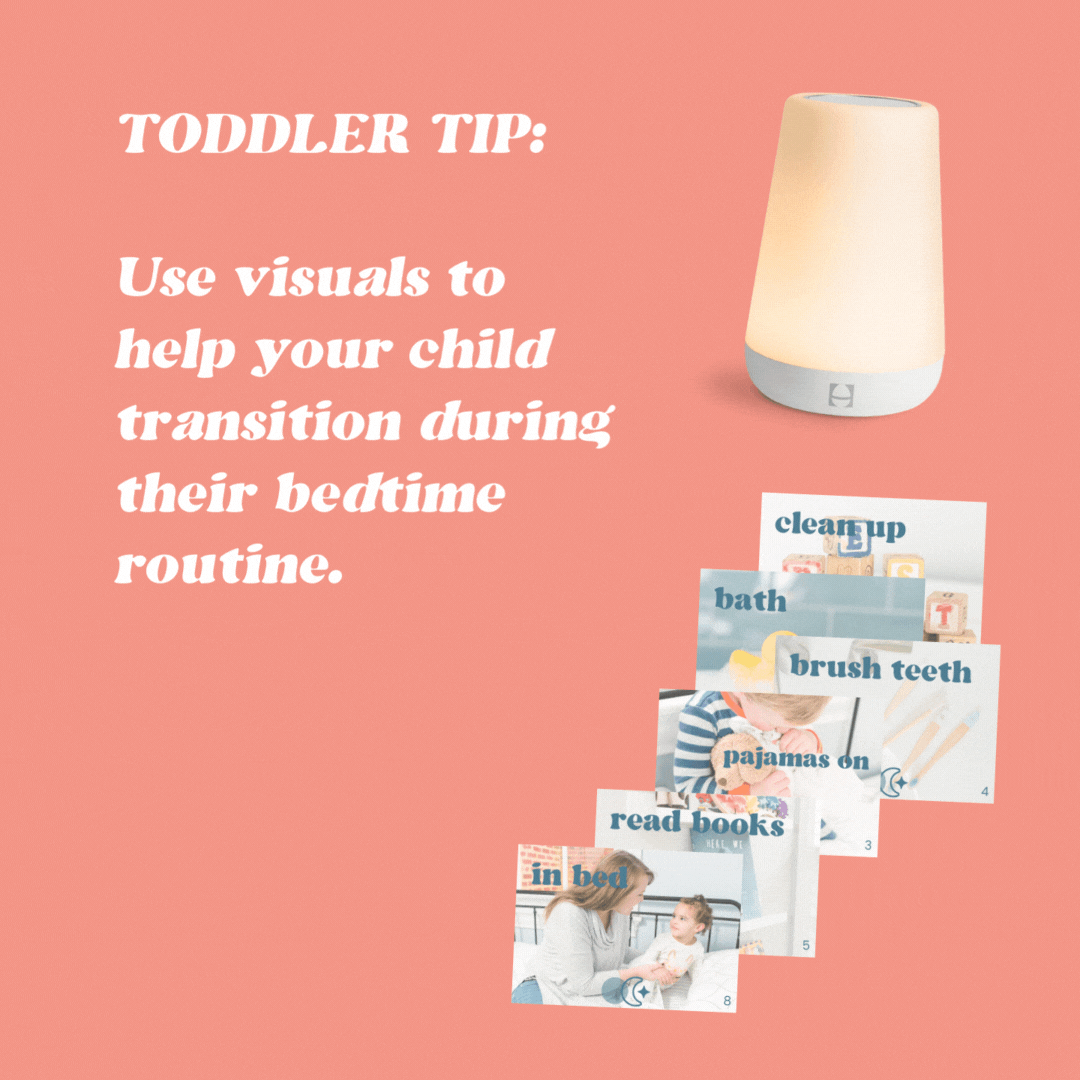Using Visual Cues to Help Your Toddler Get Through Their Bedtime Routine
It’s super common for toddlers to begin testing boundaries at bedtime.
You’ve been doing a bedtime routine for a while, and they’re used to it. In fact, I’m willing to bet they feel uber-confident because you’ve provided this routine for them. They know what happens next, and they’re self-assured enough with this routine to test the waters with you, knowing you're their safe space. It’s kind of a compliment!
If you find yourself in this predicament, you’re not alone. This is a very common behavior for toddlers to begin to exhibit.
I’m also willing to bet most of your difficulties are with transitions. You can read more about that here.
Today, though, I want to focus on using visual cues to help your toddler (or preschooler if you’re having these same issues) get through their bedtime routine.

Using Bedtime Cards
Bedtime cards are just that - cards that help your child transition between the activities of their bedtime routine. For all of our clients, we provide bedtime routine cards showing the following:
Clean up
Take a bath
Put pajamas on
Brush teeth
Read books
Lights off, white noise on
Songs, cuddles, prayers
Get in bed
You can also easily make your own if you’re more of a DIYer.
There are two different ways you can use these:
Keep the cards with you and have your child identify what’s next in the routine, carrying them along with you as you go.
OR
Keep the cards in their corresponding places and have your child find them as it comes next up in the routine.
Either way works great!
Using a Toddler Clock
I love providing cues for my boys with our Hatch okay-to-wake clock. Not only do we use this machine for white noise, but we also use the lights as our bedtime cueing system and our okay-to-wake clock.
Here’s how I would recommend programming yours:
The yellow light should come on 45 minutes before your child needs to get in bed and turn off the lights for the night. Yellow typically means slow down, so that’s the message we’re sending here. It’s time to calm down and get ready for bed. Turn on the bathtub, prep their pajamas, etc. Move on with completing your child’s bedtime routine.
After their bath, brushing their teeth, getting pajamas on, etc., it’s time to read books. You can do this a few ways - either set a limit to how many books you’re going to read OR read together until the light turns red.
The yellow light has been on for about 45 minutes at this point. Now, program the white noise and the red light to come on simultaneously. Once the red light comes on, this is your child’s signal that it’s time to say goodnight and get in bed. This is where you will do snuggles, hugs, kisses, songs, etc. The red light should only be programmed to be on for 2-3 minutes. Red means “stop” - the day is over.
After the red light has been on for 2-3 minutes, program the machine to turn the light off, but keep the white noise playing for the duration of the sleep period.
In the morning, when it’s okay for the child to be awake or get up, the green light can be programmed to come on.
Toddlers are visual learners, so set them up for bedtime success with bedtime cards and some sort of toddler clock.
Pair these with your other transition strategies, and you’re well on your way to a peaceful bedtime routine!
Struggling with your toddler or preschooler’s sleep? Check out our personalized, one-on-one services!
Comments